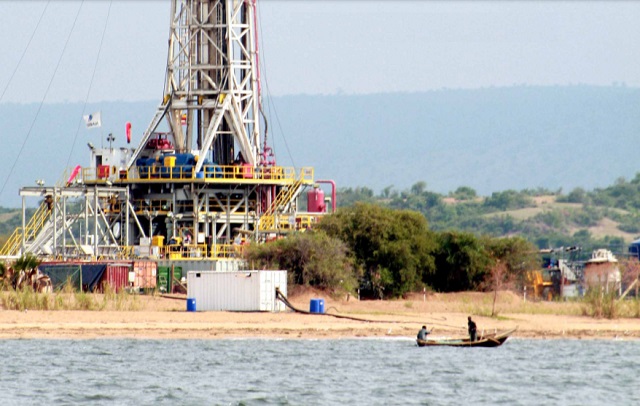
Kampala, Uganda | THE INDEPENDENT | Uganda is expected to attract investments worth 3 billion dollars (10.6 trillion shillings) this year in the oil and gas sector alone as developments towards production in 2025 proceed.
According to the Petroleum Authority of Uganda, PAU, investments in the sector were worth 500 million dollars last year, which was almost double the figures for 2019.
The year 2020 attracted 180 million-dollars worth of investments, and the drop from the previous year was attributed to the global effects of Covid-19 which included bans on travels.
The ongoing heavy investments since late last year are as a result of the April 2021 signing of agreements between the governments of Uganda and Tanzania and the oil companies, which paved the way for the start to several development projects. These include the ground works for the construction of the central processing facilities for the Tilenga and Kingfisher projects which are being developed by Total and CNOOC respectively.
The authority says these investments are expected to increase to about 3 billion in 2022, as more works are commissioned, including the start to construction of the East African Crude Oil Pipeline Project.
PAU Executive Director, Ernest Rubondo says there are yet many investment budgets that companies have submitted to PAU for approval, worth another 6 billion.
According to the laws and contracts, the government, through PAU is supposed to approve the investment budgets submitted by the companies before they are awarded the contracts. This is aimed at managing the investment costs because the companies will have to recoup some of them when commercial production starts.
According to PAU, the sector progressed successfully over the year despite the circumstances. “This was despite the COVID-19 pandemic and its resulting impacts, which ravaged Uganda and the world during these two years. The most important milestones achieved in the country’s oil and gas sector included conclusion of the agreements, launching of the oil and gas projects in April and conclusion of critical legislation by parliament,” says Rubondo.
These bills are the EACOP (Special Provisions) Bill 2021, the Income Tax Amendment Bill, and the Public Finance Management Act Amendment Bill 2021. The sector also expects that in the short to midterm, the discovered oil deposits will increase significantly from the current 6.5 billion barrels, as more exploration sites are opened.
The new exploration activities are being conducted by Oranto Petroleum Limited (OPL) and Armour Energy Uganda Limited (AEUL) in the Ngassa and Kanywataba Contract areas respectively, while the licensing of additional areas for exploration is being handled by the Ministry of Energy and Mineral Development, are successful.
Apart from the oil companies, there are another 10 contracts for drilling and management of wells, with Total’s Tilenga having 10 contractors for the different works. Rubondo says that almost all registered engineering companies in Uganda have applied and been awarded contracts in the oil and gas sector.
On the campaign against fossil fuels, Rubondo says Uganda is part of the global energy transition program aimed at ensuring reduction to carbon emission. Petroleum is ranked second most dreaded production process after coal regarding carbon emission.
However, according to him, the campaign will not bear fruit as quickly as the world wants and therefore, oil will continue to be demanded in the world for decades.
He however says that on a technical side of it, Uganda’s oil and gas sector is being developed in a manner that reduces the negative impact on the environment.
He gives as example where the gas from the oil fields is not being flared, neither will it be used only for electricity generation but for production of cleaner Liquified Petroleum Gas (LPG) too. There are also plans to use solar energy in the oil and gas activities like heating for aspects of the EACOP.
More than 25,000 tons of crude oil remains stored in Buliisa, six years after it was produced during exploration and is yet to be sold. Explaining why the crude is yet to be sold and what it means for Uganda’s sector when commercial production starts, Rubondo says the available stocks are very little to attract a global buyer for economic purposes.
He also adds that local or regional companies which would take it for use in other forms of industrial or construction processes, have not met to health and safety requirements.
On the prospects of 2022, PAU the currently momentum is promising that 2022 will be busy for the sector.
“The contracting and land acquisition processes will be concluded, and the work on the ground will intensify, with the commencement of development drilling of the planned 450 wells in the second half of 2022. The year 2022 is going to commence the period of three years of intense infrastructure development in preparation for first oil in 2025,” says Rubondo.
*****
URN
 The Independent Uganda: You get the Truth we Pay the Price
The Independent Uganda: You get the Truth we Pay the Price


